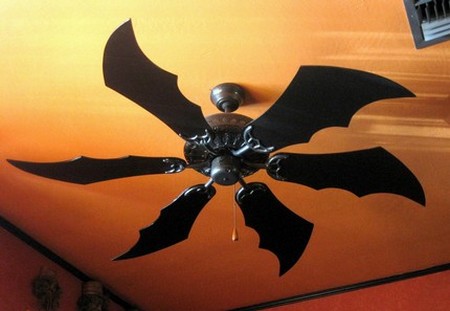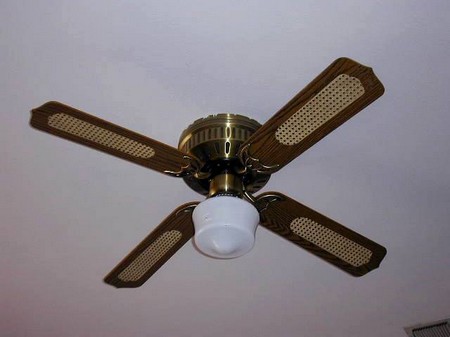Ceiling fans, widely popular in humid climates before air conditioning appeared, have returned to many homes as an efficient method of circulating heated or conditioned air. They work as great alternatives to have in addition to an hvac, as there will be times when you will need to call an ac service for repairs and maintenance while still needing to ventilate and cool your home. However, as all homeowners know, every new appliance brings new opportunities for appliance repair. Fortunately, the common ceiling fan is quite simple in construction and operation, making the repair easy. However if you can not fix it on your own, here is a trusted contractor you can call for emergency assistance.
BASIC CEILING FANS
The ceiling fan is nothing more than a motor with blades attached to the end of a motor shaft. Most do-it-yourselfers replace rather than repair motors. However, in the majority of cases, the required repair is not too difficult, so fixing the motor might be a better solution than buying a new motor as a trusted Florida ac repair suggests.
To complicate the situation, ceiling fans are offering more and more “extras”¡ªeach with its own set of potential problems. The most popular extra is variable speeds. This is accomplished by simply placing a switch in the circuit that reduces the amount of electricity that is sent to the fan motor.
Some fans offer a second circuit for lighting. It is a separate circuit so that you can turn on the lighting or the fan or both¡ªyour choice. If your ceiling fan has a switch or control on the wall for each function, then there are separate circuits for the fan and lights. However, if there is only one switch, the wiring goes up to the fixture before it is split into two circuits. This means you can turn on and off both the fan and lights from the wall switch.
TROUBLESHOOTING
If there is power in all parts of the circuit, but either the lights or the fan is inoperative, and the bulbs test good, the problem may be a defective switch. Remove the fuse or turn the circuit breaker off before unwiring switches to test the circuit.
Using a continuity tester, attach the alligator clip lead to one of the switch’s line terminals. Fasten the other lead to the other line terminal and operate the switch. The switch, if operating properly, will cause the tester to light when the switch is in the on position and shut off when the switch is in the off position. There should be no continuity (shown by a glowing light) between either terminal and the bracket. Replace the switch if necessary.
You can test any switches in the fan unit itself in the same manner. The continuity tester uses an internal battery to supply low voltage electricity to the switch to determine whether there is continuity or a closed circuit. The continuity tester is especially useful in testing bulbs, tubes, and fixtures when they are out of the circuit. You can test light bulbs by touching the alligator clip to the tip of the base and the pointer to the side of the metal base. A glowing tester light means continuity. Please remember that you should use a continuity tester only on de-energized circuits. For energized circuits, use a neon voltage tester, ohmmeter, or volt-ohmmeter (VOM).
SOLVING COMMON PROBLEMS
The most typical problems that occur within ceiling fans are loose connections. That is, a wire connected to the power source by a wire nut, solder, or tape has worked itself loose and simply needs retightening. In fact, once you have pulled the cover off your ceiling fan, you should first look for loose wires. Be careful that by removing the cover you don’t disturb other wires, so that you have a maze of loose wires that you must then find appropriate homes for.
The next common problem is defective switches. As outlined above, you can easily test the wall and fan switches with a simple continuity tester, replacing any that are defective. However, replace switches with identical types. That is, single-pole single-throw (SPST) switches must be replaced with the same type to operate correctly. If you have doubts as to the type, take the defective switch to your building materials retailer or lighting shop and ask for an identical replacement.
If it is the fan motor that needs repair, you should first consider whether it’s time to replace the entire ceiling fan. Since most ceiling fan motors are built to run for many maintenance-free years, if they go from old age, it’s a sign that other components are also suffering senility. The cost of ceiling fans has lowered to where they are not that much more expensive than having a motor replaced. However, if you’re comfortable with electricity and motor repair, have at it.

